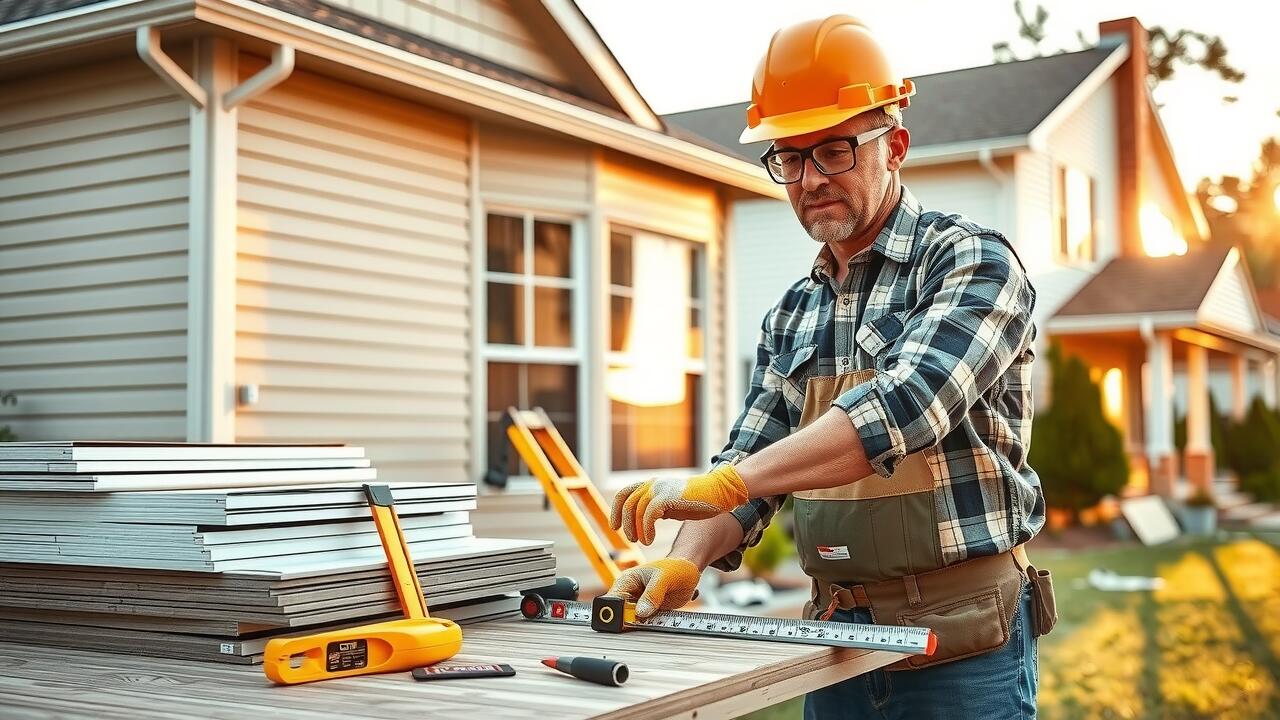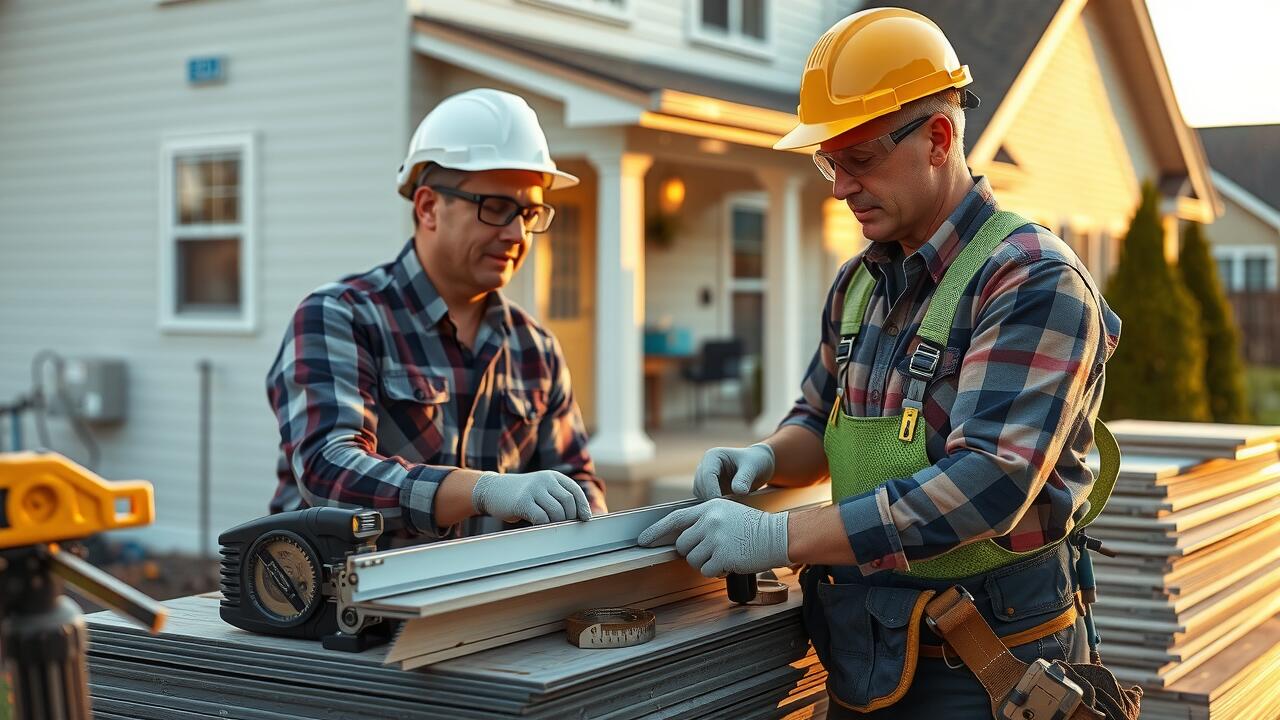
Table Of Contents
Seasonal Considerations
Seasonal changes play a significant role in siding installation, particularly in regions like Deadwood, South Dakota. The climate can fluctuate dramatically throughout the year, affecting the timing of your project. Spring and early fall are often seen as the best seasons due to milder temperatures and lower humidity levels. These conditions enable materials to adhere properly and ensure a smoother installation process.
Winter can pose challenges for siding installation in Deadwood, South Dakota. Cold temperatures can cause adhesives to freeze, and moisture from snow or rain may hinder the project timeline. However, some contractors may offer winter services, using specific techniques to mitigate these issues. Understanding these seasonal factors can guide homeowners in planning their siding installation effectively, aiming for optimal conditions for quality results.
Best Times to Install Siding
The timing of siding installation can greatly influence both the quality of the outcome and the costs involved. In regions like Deadwood, South Dakota, the ideal months typically fall in late spring through early fall. These seasons often provide dry weather conditions, making it easier for contractors to complete the work without interruptions from rain or snow. Additionally, warmer temperatures can help adhesives and materials perform optimally, which is a crucial aspect of ensuring long-lasting results.
Homeowners should also consider other factors like local building codes and contractor availability. Scheduling siding installation in Deadwood, South Dakota, during the off-peak season may provide cost advantages, but it could also mean limited contractor choices. Understanding the local climate and contractor schedules will assist in making an informed decision about when to proceed with a siding project.
Finding and Hiring Contractors
When searching for qualified contractors for siding installation in Deadwood, South Dakota, it’s essential to start by gathering recommendations from friends, family, or local home improvement stores. Online reviews and ratings can provide valuable insights into contractors' reputations and quality of work. Create a shortlist of potential candidates and check their credentials, including licensing and insurance, to ensure they meet state requirements.
Once you have identified potential contractors, schedule interviews to discuss your project specifications and obtain detailed quotes. Ask for references from previous clients and follow up to gauge satisfaction levels. Pay attention to how well they communicate and address your concerns, as open communication is crucial for a successful project. Evaluating these factors will help in making an informed decision for your siding installation needs.
Tips for Selecting a Qualified Installer
When selecting a qualified installer for your siding project, obtaining multiple bids is essential. This process allows homeowners to compare prices, materials, and timelines. Be sure to check the credentials of each contractor, looking for relevant licenses and insurance coverage. Additionally, reading customer reviews can provide insight into the installer’s reputation and reliability in the area. Siding installation in Deadwood, South Dakota, can vary depending on local weather conditions and building codes, so ensure that the contractor is familiar with these factors.
It is also important to ask for references from previous clients. Speaking with others who have used the contractor can offer a clearer picture of their workmanship and professionalism. Inquire about the efficiency of their project management and their adherence to deadlines. Make sure to discuss warranties on both labor and materials to safeguard your investment. A qualified installer should provide detailed answers and openly address any concerns you may have regarding the siding installation process.
Performing DIY Siding Installation
Homeowners who wish to take on siding installation in Deadwood, South Dakota, should start by gathering the necessary tools and materials. A level, tape measure, and circular saw are essential for precise cuts, while a nail gun can expedite the installation process. Safety equipment such as gloves, goggles, and a dust mask should be worn to protect against debris and other hazards. Planning the layout and ensuring that all materials are readily available can streamline the project and prevent unnecessary delays.
When it comes to the actual installation, understanding the techniques for attaching siding is crucial. For example, vinyl siding should be installed starting from the bottom and working upwards, ensuring that each panel interlocks properly. Homeowners should also pay attention to weather conditions before they begin. It's advisable to avoid installing siding in extreme temperatures, as this can affect the expansion and contraction of the materials. Taking these factors into account will help achieve a more professional finish while ensuring the durability of the siding installation.
Tools and Techniques for Homeowners
Homeowners looking to undertake siding installation in Deadwood, South Dakota, can benefit from gathering the right tools and materials beforehand. Basic tools typically include a measuring tape, a level, a hammer, and a saw suitable for cutting siding materials. It is advisable to wear safety gear, such as gloves and goggles, to protect from debris and sharp edges. Gathering these tools before starting will help streamline the process and reduce potential delays.
Understanding the various siding materials and installation techniques is crucial for a successful project. Vinyl, wood, and fiber cement are popular options, each requiring different approaches. Homeowners should familiarize themselves with specific installation methods for each type to ensure proper fit and alignment. Online tutorials and local workshops may provide valuable insights, making it easier to complete the installation efficiently.
FAQS
What factors should I consider when estimating siding installation costs?
When estimating siding installation costs, consider factors such as the type of siding material, the size of your home, labor costs, any necessary permits, and additional features like insulation or trim.
How can I determine the amount of siding material I need?
To determine the amount of siding material needed, measure the total square footage of your home's exterior walls. Subtract areas for windows and doors to get a more accurate estimate of the siding required.
Are there seasonal considerations that affect siding installation costs?
Yes, seasonal considerations can impact costs. Typically, siding installation is more cost-effective in moderate weather conditions during spring and fall, whereas winter can lead to higher costs due to additional preparation needs and potential weather delays.
What are some tips for finding qualified siding contractors?
To find qualified siding contractors, ask for recommendations from friends or family, check online reviews, verify their licenses and insurance, and request multiple quotes to compare prices and services.
Can I save money by installing siding myself?
Yes, you can save money by performing a DIY siding installation. However, ensure you have the right tools, skills, and knowledge of installation techniques to avoid costly mistakes. It's advisable to research thoroughly or consult professionals if you're unsure.
